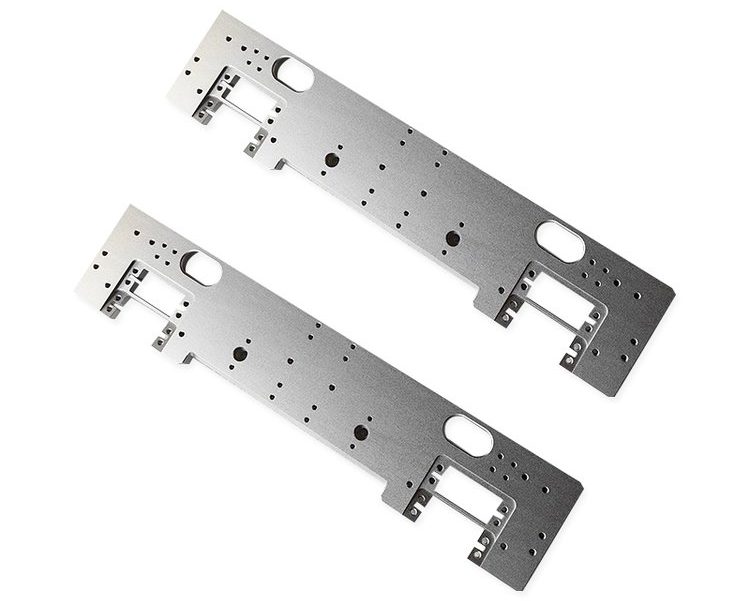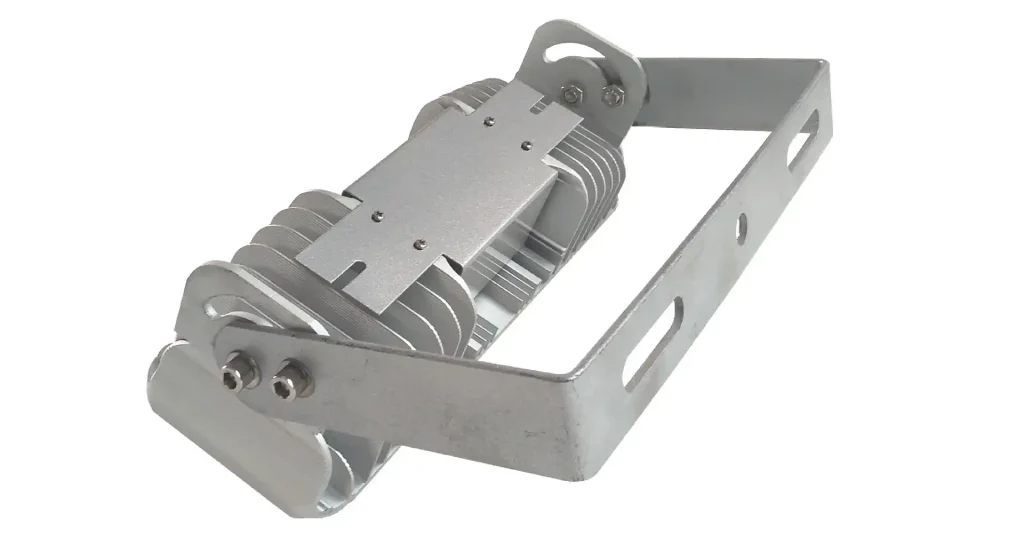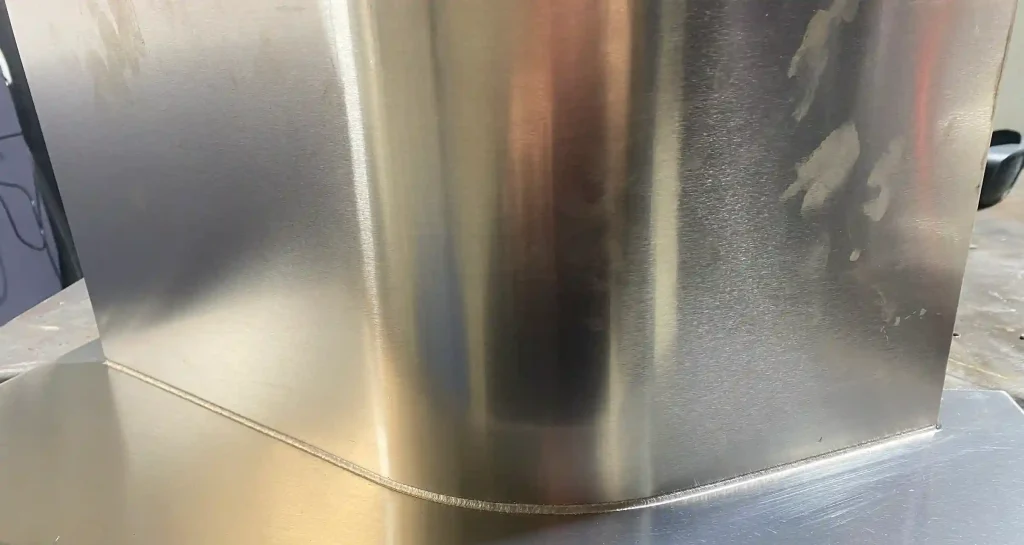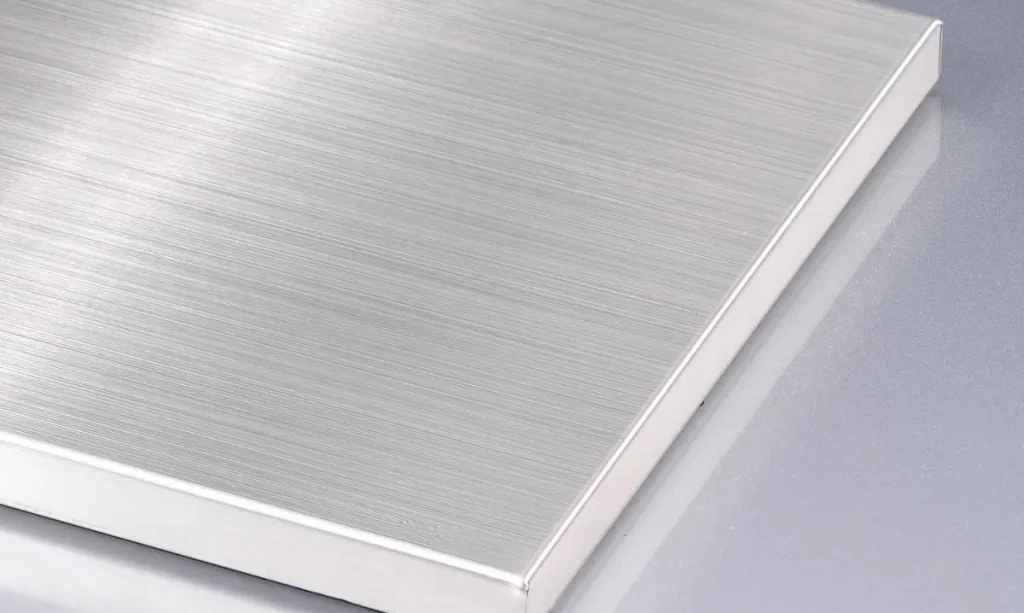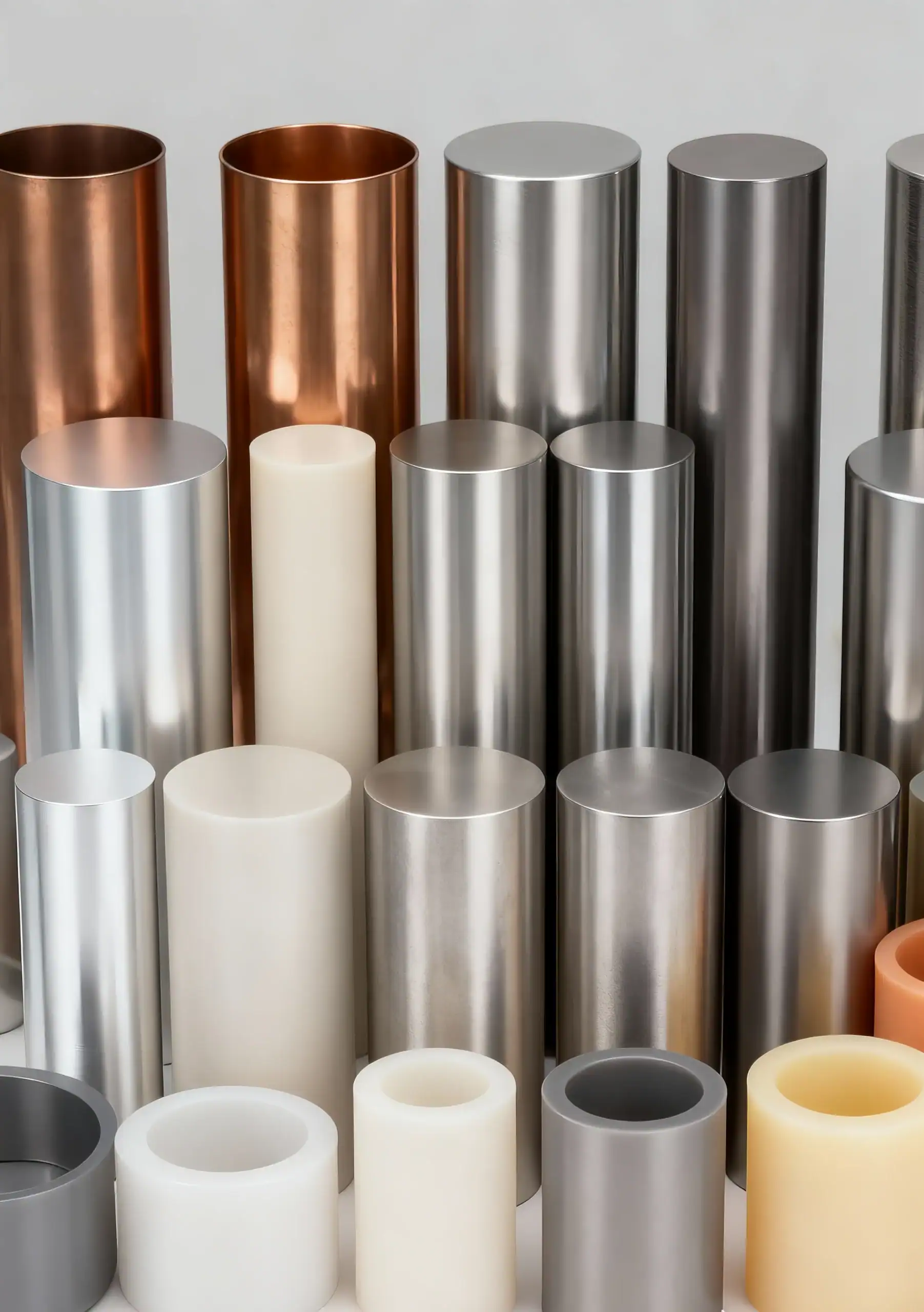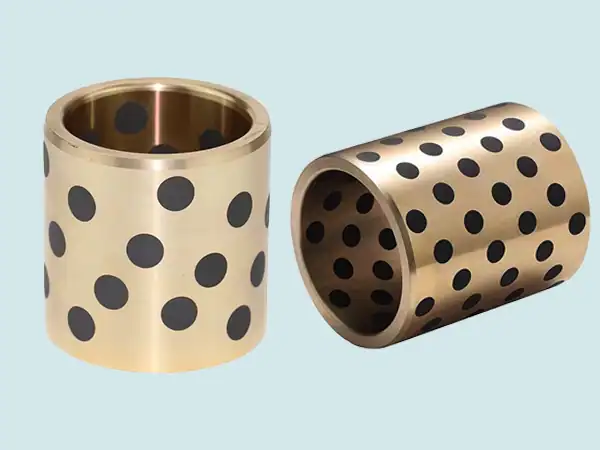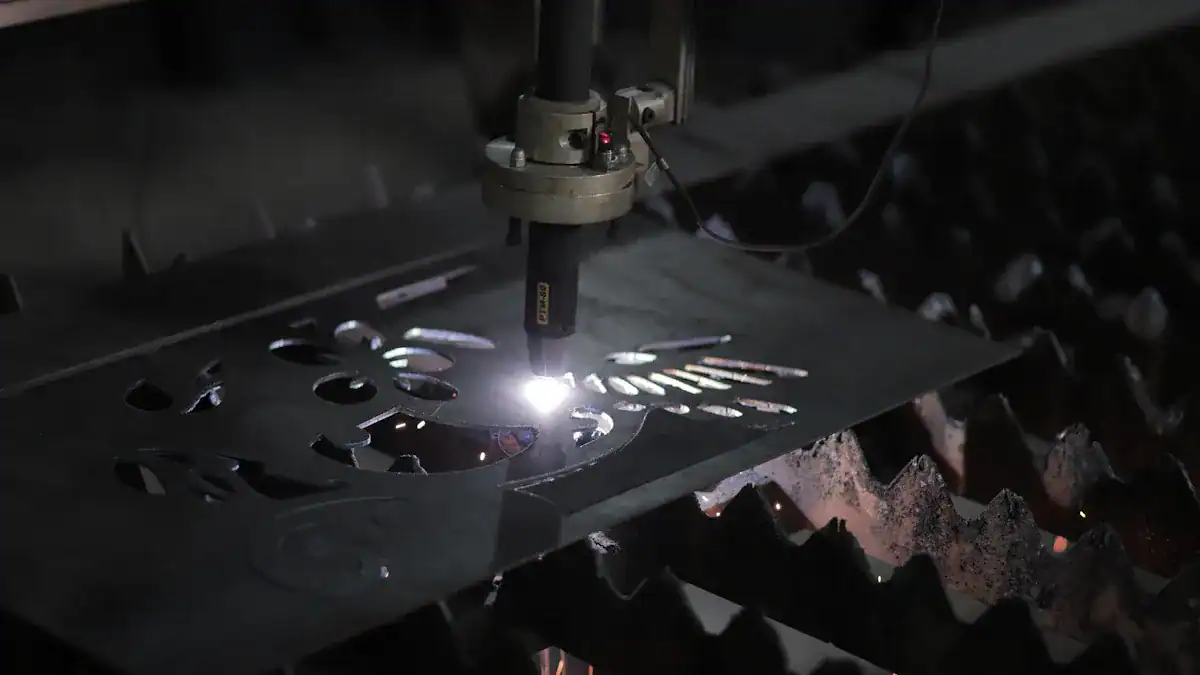Aluminum alloys are widely used in modern manufacturing and engineering for their excellent strength-to-weight ratio, good corrosion resistance, and excellent machinability. Two aluminum alloys, 6061 and 6063, are particularly common and are often used in a variety of application scenarios such as structural components, mechanical parts and architectural profiles. Although they belong to the same 6000 series of aluminum alloys and their compositions are close to each other, there are obvious differences in their mechanical properties, heat treatment reactions, forming methods and end uses.
This article will systematically compare the physical properties, performance comparisons and uses of 6061 aluminum and 6063 aluminum to help engineers, purchasers and designers better select the right material.
Understanding 6061 Aluminum and 6063 Aluminum
Overview of 6061 Aluminum
Aluminum 6061 is one of the most commonly used aluminum materials today. It was first manufactured in 1935 and is known as “Alloy 61s”. This alloy was developed to meet the demand for a strong, lightweight material. It is composed of aluminum, magnesium and silicon. These elements make it strong and resistant to rust and corrosion. Over time, advanced technology has also improved its quality. Today, it is widely used to build strong structures.
6061 aluminum is widely used in industries such as aerospace, automotive and construction. Its high strength makes it ideal for heavy-duty operations. For example, it is used to make airplane parts, truck frames and pipes. Despite its strength, it is easy to form, which helps manufacturers create precise designs.
| Property | 6061 Aluminum |
|---|---|
| Yield Strength (T6) | Higher |
| Corrosion Resistance | Moderate |
| Common Applications | Structural applications |
Overview of 6063 Aluminum
6063 Aluminum is also known as a “building alloy”. It is characterized primarily by its smooth surface and rust-resistant properties. This alloy is made of aluminum, magnesium and silicon. These materials make the material soft and easy to mold. Unlike 6061, 6063 is better suited for creating elaborate designs. It is commonly used in windows, doors, and other architectural decorations.
Manufacturers use a special process to improve 6063 aluminum. The extrusion process creates fine shapes. Anodizing gives it a better appearance and makes it less susceptible to rust. These properties make 6063 aluminum ideal for projects seeking beauty and durability.
| Property | 6063 Aluminum |
|---|---|
| Surface Finish | Better for architectural purposes |
| Corrosion Resistance | Higher |
| Common Applications | Architectural applications |
6061 aluminum and 6063 aluminum are good for different uses. 6061 is strong and tough, while 6063 looks better and resists rust. Knowing these differences helps you pick the right one for your project.
Key Mechanical and Physical Properties
Strength and hardness
Aluminum 6061 is stronger than aluminum 6063. It has higher tensile and yield strengths, which makes it ideal for difficult jobs. For example, 6061 aluminum can withstand stresses of about 310 MPa. In contrast, 6063 aluminum can only withstand about 241 MPa. This means that 6061 aluminum is better suited for applications such as truck frames and aircraft components.
6061 aluminum is also harder than 6063 aluminum. t6 aluminum does not bend or dent easily under pressure. This makes it ideal for heavy-duty applications. On the other hand, 6063 aluminum is softer and easier to form. This makes it ideal for detailing.
| Property | 6061 Aluminum (T6) | 6063 Aluminum (T5) |
|---|---|---|
| Tensile Strength (MPa) | 310 | 241 |
| Yield Strength (MPa) | 276 | 214 |
| Hardness (Brinell) | 95 | 73 |
Corrosion Resistance
Both 6061 and 6063 aluminum have good resistance to rust, but 6063 is a little better. It has a lower copper content, so it is less likely to rust. That’s why it’s good for outdoor projects like window frames and railings.
6061 aluminum is also rust-resistant, but may require additional coatings in harsh conditions. For example, anodizing protects it from moisture and salt. If your project faces a lot of water or harsh weather, 6063 aluminum is a better choice.
Thermal and electrical conductivity
Both alloys have good thermal and electrical conductivity. However, 6061 aluminum has a little better thermal conductivity, making it ideal for cooling systems and heat exchangers. 6063 aluminum, on the other hand, is ideal for wire conduit and heat sinks due to its smooth surface.
Both alloys are capable of meeting both thermal and electrical energy needs. Please make your selection based on your project needs.
Surface Finish and Aesthetics
6063 aluminum is an excellent choice for creating a smooth appearance. The polished surface is perfect for projects that require an aesthetic appearance. It is typically used in window frames, railings, and decorative strips.
This alloy is well suited for anodizing. Anodizing makes it stronger and still has a glossy finish.
However, 6061 aluminum is more about strength than appearance. Its surface is not as smooth as 6063 aluminum, so it is better suited for sturdy structures. Although 6061 aluminum can be anodized, it does not look as bright as 6063 aluminum.
Key Features of Surface Finish and Aesthetics
- 6063 Aluminum:
- Smooth, polished surface.
- Ideal for projects where appearance is important.
- Anodizing improves its strength and glossy appearance.
- 6061 Aluminum:
- Has a basic finish suitable for tough jobs.
- Not as smooth as 6063, which focuses on strength and purpose.
Understanding these differences will help you choose the right material. If appearance is most important, choose 6063 aluminum. For a strong building, 6061 aluminum is a better choice.
Performance Comparison
Machinability
Aluminum 6061 is more suitable for cnc machining than aluminum 6063. It is harder (95 Brinell vs. 73 Brinell). This hardness extends tool life and prevents clogging. With 6061 aluminum, you can make precise cuts more easily. Its higher tensile strength (310 MPa vs. 241 MPa) allows it to maintain its strength under pressure. That’s why it’s ideal for parts that require precise measurements.
6063 aluminum is soft and easy to form. The softness can cause tools to clog during machining. If your project requires a fine design or a smooth surface, 6063 aluminum can meet your needs. However, you may need to adjust your machining methods.
Weldability
They are both suitable for welding, but they are different. 6063 aluminum is easier to weld because it has a lower copper content. This also reduces the likelihood of cracking.
6061 aluminum can also be welded, but care needs to be taken. Because of its relatively high strength and copper content, it can cause cracking if not handled properly. Preheating before processing and using a suitable filler alloy can improve firmness. For sturdy construction, 6061 aluminum is still a good choice.
Formability
6063 aluminum is better suited for bending and forming. It has a higher elongation before breaking (15% vs. 12% for 6061). This also makes it suitable for creating fine shapes. After extrusion, it has a tensile strength of 228 MPa and an elongation of 26.9%.
6061 aluminum is less flexible, but still suitable for simple shapes. Because of its strength it is also suitable for making parts that carry heavy loads. If your project requires strong, simple shapes, 6061 aluminum is a reliable choice.
| Property | 6061 Aluminum | 6063 Aluminum |
|---|---|---|
| Elongation (%) | 12 | 15 |
| Tensile Strength | 310 MPa | 241 MPa |
| Extrusion Suitability | Moderate | Excellent |
Durability and Longevity
Choosing 6061 or 6063 aluminum also depends on the durability you need. Both are durable, but specific properties vary from situation to situation.
- 6061 Aluminum: Strong and Tough
-
- 6061 aluminum is strong and resistant to abrasion. Its ability to carry heavy loads and withstand repeated stress makes it suitable for bridges, truck frames and aircraft components. If your project requires long-lasting strength, 6061 aluminum is a good choice.
- In wet or salty environments, 6061 aluminum may require additional protection. Adding coatings such as paint or anodizing can extend service life in harsh conditions.
- 6063 Aluminum: Rust Resistant and Smooth
-
- 6063 aluminum is more resistant to rust and corrosion than 6061 aluminum. It is suitable for outdoor or waterside use. Because of its lower copper content, it is less likely to rust. If your project is exposed to rain or salty air, 6063 aluminum is a good choice.
- This alloy is also durable and aesthetically pleasing. This is because the smooth surface is suitable for railings, window frames, and trim. You don’t have to worry about it losing its luster.
Uses of 6061 Aluminum and 6063 Aluminum
Where 6061 Aluminum is Used
6061 Aluminum is strong, durable and versatile. Its high tensile strength and rust-resistant properties make it suitable for many applications. It is commonly used in truck frames and engine components in automobiles. Because these parts need to be strong and durable. In airplanes, 6061 aluminum is used to make parts that are subjected to heavy loads.
For ships, 6061 aluminum is well suited for manufacturing equipment and fittings. It is resistant to rust and corrosion, especially when anodized, so it lasts in salt water. It is also used in pipes and machines because of its good pressure resistance. Even in electronics and furniture, it is favored for its lightness and sturdiness.
| Alloy | Common Uses | Key Features |
|---|---|---|
| 6061 | Car parts, pipelines, boat gear, furniture, electronics, airplanes | Strong, rust-resistant, easy to weld |
Where 6063 Aluminum is Used
6063 aluminum is also known as the “architectural alloy” because of its beautiful appearance. Its smooth surface and easy molding properties make it ideal for design. It is often used to make window and door frames to enhance the appearance of buildings. Aluminum 6063 is also used for railings, trim and ornaments.
This alloy is also used in solar panel frames and brackets. It is rust-resistant and remains strong in harsh weather, making it ideal for outdoor use.
| Use Area | Why It’s Chosen |
|---|---|
| Architectural Designs | Smooth surface and easy to shape |
| Window and Door Frames | Looks good and works well in construction |
| Building Supports | Strong and resists weather |
Comparative Summary of 6061 Aluminum and 6063 Aluminum
Key Differences at a Glance
Aluminum 6061 and 6063 have different strengths and uses. The following table shows their main differences:
| Property | 6061 | 6063 |
|---|---|---|
| Tensile Strength | 124–290 MPa | 145–186 MPa |
| Yield Strength | 276 MPa (40,000 psi) | 214 MPa (31,000 psi) |
| Fatigue Strength | 96.5 MPa (14,000 psi) | 68.9 MPa (10,000 psi) |
| Hardness (Brinell) | 95 | 73 |
| Machinability | Good | Fair |
| Thermal Conductivity | 151–202 W/(m·K) | 201–218 W/(m·K) |
6061 aluminum is stronger and lasts longer, making it suitable for heavy-duty components such as aircraft and automotive parts. 6063 aluminum, on the other hand, offers better rust resistance and a smoother surface for windows, railings and other decorative applications.
Choosing the Right Alloy for Your Needs
The choice of 6061 or 6063 aluminum depends on your project needs. The following steps can be followed to select the best aluminum:
- Understand your project goals
Decide if you need strength, rust resistance or a smooth surface. For sturdy components, 6061 aluminum is better. For outdoor or decorative items, 6063 aluminum is ideal. - Compare their properties
Learn about their benefits and uses. The table below shows the best uses for them:Alloy Yield Strength (MPa) Tensile Strength (MPa) Common Applications 6061 275 310 Aerospace, automotive parts 6063 210 240 Architectural applications - Consider the environment
If your project faces water, 6063 aluminum is a better choice. If you need a strong, durable building, 6061 aluminum is ideal. - Check machining requirements
If you need to machine or weld, consider the properties of each alloy. 6061 is easier to machine, while 6063 is easier to weld.
By choosing the right alloy for your project, you can make the best choice.
Conclusion
In this article, we explore the differences in strength, corrosion resistance, machinability, surface finish, and formability between 6061 aluminum, which has high tensile strength and good hardness and is suitable for load-bearing structures, and 6063, which has good corrosion resistance and an excellent surface finish and is suitable for architectural components such as window frames, railings, and decorative strips.
Specializing in custom CNC machining, Future Parts offers not only 6061 and 6063 aluminum, but also a wide range of materials including titanium, stainless steel, brass and engineered materials. Backed by precision equipment and experienced engineers, we help you turn the right material choices into high-performance parts that meet your needs.
FAQ
Is 6061 Better than 6063 Anodizing?
What is the Difference Between 6061 and 6063?
Is 6061 or 6063 Easier to Weld?
6063 is usually easier to weld because it has a lower copper content, which reduces the risk of cracking. 6061 can also be welded, but may require more care, and problems can be avoided by preheating before processing or using the correct filler.
Is Aluminium 6061 Cheap?
6061 aluminum is moderately priced, not the cheapest, but cost effective for its strength and versatility. Due to its higher strength, it is more expensive than 6063, but is still affordable for many structural and industrial applications.
